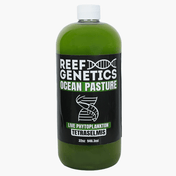Introduction to Small Polyp Stony Coral (SPS)
Small Polyp Stony (SPS) corals are among the most popular and rewarding types of corals to keep in a reef aquarium. Their intricate structures, vibrant colors, and unique growth patterns make them a favorite among reef enthusiasts. This guide will delve into the various aspects of SPS coral care, ensuring that you have all the knowledge needed to maintain a healthy and thriving coral reef.
What Are Small Polyp Stony Corals?
Small Polyp Stony (SPS) corals are a group of hard corals characterized by their small polyps, typically less than 2 millimeters in diameter. They possess a rigid calcium carbonate skeleton, which contributes to the coral reef structure. SPS corals are often prized for their beautiful, intricate shapes and bright colors. They play a crucial role in the marine ecosystem, providing habitat and protection for various marine species.
Types of Small Polyp Stony Corals
Several species of SPS corals are popular among reef keepers. Each species has unique characteristics and care requirements. Some of the most well-known types include Acropora, Montipora, and Seriatopora.
Acropora Species
Acropora corals are highly diverse, with over 150 species found in various reef environments. They are known for their branching growth patterns and can exhibit a range of colors, from deep blues to vibrant greens and pinks. Acropora corals are sensitive to changes in water conditions and require stable, high-quality water, strong lighting, and significant water flow to thrive. Some popular varieties include:
- Acropora millepora
- Acropora tenuis
- Acropora valida
Montipora Species
Montipora corals are more forgiving than Acropora and come in a variety of forms, including plating, encrusting, and branching. They are known for their bright colors and can adapt to a range of lighting and flow conditions, though they prefer moderate to high light and flow. Popular Montipora species include:
- Montipora capricornis (Plating)
- Montipora digitata (Branching)
- Montipora undata (Encrusting)
Seriatopora Species
Seriatopora corals, commonly referred to as bird's nest corals, have delicate, needle-like branches. They are relatively easy to care for but require strong water movement and intense lighting to maintain their health and coloration. Popular Seriatopora species include:
- Seriatopora hystrix
- Seriatopora caliendrum
Other SPS Species
Other notable SPS corals include Stylophora and Pocillopora. Stylophora, also known as cat's paw coral, has thicker branches and can tolerate a wider range of conditions. Pocillopora corals are known for their bushy appearance and can also adapt to various lighting and flow conditions.
Setting Up an SPS Coral Tank
Equipment: Essential equipment includes a high-quality protein skimmer, return pump, powerheads for water movement, and an appropriate lighting system. Automated dosing systems can help maintain consistent water parameters.
Initial Setup: Begin with a proper tank cycling process to establish beneficial bacteria. Use live rock and sand to create a natural environment. Arrange the rockwork to ensure good water flow and adequate space for coral placement.
Water Parameters for SPS Corals
Maintaining stable water parameters is crucial for the health of SPS corals. Ideal conditions include:
- Temperature: 75-80°F
- Salinity: 1.025-1.026
- pH: 8.1-8.4
- Alkalinity: 8-12 dKH
- Calcium: 400-450 ppm
- Magnesium: 1250-1350 ppm
- Nitrates: < 5 ppm
- Phosphates: < 0.03 ppm
Regular testing and adjustments are essential to keep these parameters stable.
Lighting Requirements
SPS corals require intense lighting, which can be provided by metal halide, T5, or LED fixtures. The light spectrum should cover both blue and white ranges to support coral health and growth. Aim for a photoperiod of 8-10 hours per day.
LED Lighting: Modern LED fixtures are highly adjustable and can be programmed to provide the ideal spectrum and intensity for SPS corals. They are also energy-efficient and generate less heat.
T5 Lighting: T5 fluorescent bulbs provide excellent coverage and can be combined with different bulb types to achieve the desired spectrum.
Metal Halide Lighting: Metal halide lights are powerful and effective but generate more heat and consume more energy compared to LEDs and T5s.
Flow Requirements
Water movement is vital for SPS corals as it helps in nutrient uptake and waste removal. Use multiple powerheads to create a turbulent flow pattern, avoiding direct blasts that can damage the coral.
Placement: Position powerheads to create random, chaotic water movement rather than a constant, linear flow. This helps mimic natural reef conditions and ensures all corals receive adequate flow.
Types of Flow: Laminar flow, where water moves in a straight line, is less effective than random or turbulent flow for SPS corals. Gyre pumps and wavemakers can help achieve the desired water movement.
Substrate and Rockwork
A sandy substrate or a bare-bottom setup is ideal for SPS tanks. Use live rock to create a stable and secure structure for coral placement. Ensure there are plenty of spaces for water flow and light penetration.
Substrate: A fine sand substrate can help reduce detritus buildup and provide a natural look. Avoid substrates that are too coarse, as they can trap debris and harm delicate coral tissue.
Rockwork: Arrange live rock to create caves, overhangs, and ledges. This not only enhances the visual appeal of the tank but also provides hiding places for fish and invertebrates.
Feeding SPS Corals
While SPS corals get most of their nutrition from photosynthesis, they also benefit from supplemental feeding. Offer a variety of foods, including phytoplankton, zooplankton, and coral-specific foods, once or twice a week.
Types of Food:
- Phytoplankton: Microscopic algae that can be added directly to the tank.
- Zooplankton: Small animal plankton that corals can capture and consume.
- Coral Food: Commercial coral foods are specifically formulated to provide the nutrients SPS corals need.
Feeding Schedule: Feed SPS corals once or twice a week, preferably at night when their polyps are extended.
Supplements and Additives
To support the growth of SPS corals, regularly dose calcium, alkalinity, and magnesium. Trace elements like strontium and iodine are also important. Use a dosing pump for consistent delivery of these supplements.
Calcium and Alkalinity: Maintain calcium levels at 400-450 ppm and alkalinity at 8-12 dKH. Use a balanced two-part dosing system or a calcium reactor to achieve this.
Magnesium: Magnesium helps stabilize calcium and alkalinity levels. Keep it between 1250-1350 ppm.
Trace Elements: Supplement trace elements like strontium, iodine, and iron, as these are essential for coral health and growth. Regular water changes can also help replenish these elements.
Common Diseases and Pests
SPS corals are susceptible to various diseases and pests, including tissue necrosis, flatworms, and red bugs. Early identification and treatment are crucial. Use quarantine practices for new additions and consider dip treatments to prevent infestations.
Tissue Necrosis: Rapid Tissue Necrosis (RTN) and Slow Tissue Necrosis (STN) are serious conditions that can quickly spread. Isolate affected corals and treat with iodine dips or other coral-specific medications.
Pests:
- Flatworms: Small, flat parasites that can cover and damage coral tissue. Treat with flatworm exit or similar products.
- Red Bugs: Tiny, red crustaceans that irritate SPS corals. Interceptor, a prescription medication, is effective against them.
- Nudibranchs: Soft-bodied mollusks that can consume coral tissue. Manual removal and dip treatments can help control them.
Acclimating New Corals
When introducing new SPS corals to your tank, use a slow acclimation process. Drip acclimation is recommended to adjust the corals to your tank's water parameters. Quarantine new arrivals to monitor for pests or diseases.
Drip Acclimation: Place the new coral in a bucket with the water it came in. Use an airline tube to slowly drip tank water into the bucket, doubling the water volume over 1-2 hours.
Quarantine: Keep new corals in a separate quarantine tank for at least 2-4 weeks. This allows you to monitor for pests and diseases without risking your main tank.
Propagation of SPS Corals
Propagation, or fragging, is a common practice for growing new corals from existing colonies. Use clean tools to cut small pieces of coral, attach them to plugs or rocks, and place them in the tank. Provide optimal conditions to promote healing and growth.
Tools: Use sharp, clean cutters or bone shears to minimize damage to the coral. Wear gloves to protect yourself and the coral.
Attachment: Attach frags to plugs or rocks using coral glue or epoxy. Place them in an area with appropriate light and flow.
Fragging SPS Corals
Fragging involves cutting small pieces of coral to grow new colonies. Ensure you use sterile tools and provide appropriate lighting and flow to the frags to promote recovery and growth.
Healing: Place frags in a low-flow area initially to allow them to heal. Gradually move them to higher flow areas as they recover.
Growth Enhancement: Provide optimal water conditions and regular feeding to encourage fast growth and development of new colonies.
Maintaining Water Quality
Regular maintenance is key to maintaining water quality in an SPS tank. Perform weekly water changes, test parameters frequently, and clean equipment regularly to prevent build-up of harmful substances.
Water Changes: Perform 10-20% water changes weekly to replenish trace elements and remove excess nutrients.
Testing: Test water parameters at least once a week. Key parameters to monitor include calcium, alkalinity, magnesium, nitrates, and phosphates.
Cleaning: Clean equipment, such as skimmers, powerheads, and reactors, regularly to maintain efficiency and prevent nutrient build-up.
Algae Control in SPS Tanks
Algae can compete with SPS corals for nutrients and light. Employ a clean-up crew, use phosphate removers, and maintain proper nutrient levels to control algae growth. Manual removal may also be necessary.
Clean-Up Crew: Snails, hermit crabs, and sea urchins can help control algae. Introduce a variety of species to target different types of algae.
Phosphate Removers: Use GFO (Granular Ferric Oxide) or similar products to reduce phosphate levels, which fuel algae growth.
Nutrient Control: Maintain low nitrate and phosphate levels through regular water changes, proper feeding practices, and efficient filtration.
Compatible Tank Mates
Choose tank mates that are compatible with SPS corals. Suitable fish include blennies, gobies, and tangs. Avoid aggressive or coral-eating species. Invertebrates like snails and hermit crabs are also beneficial.
Fish: Blennies, gobies, and tangs are generally safe with SPS corals. Avoid large angelfish and butterflyfish that may nip at corals.
Invertebrates: Snails, hermit crabs, and shrimp can help control algae and detritus. Avoid crabs and shrimp that may damage corals.
Incompatible Tank Mates
Avoid species that are known to harm SPS corals, such as large angelfish, butterflyfish, and certain crabs. Research compatibility before introducing any new species to your tank.
Fish to Avoid: Large angelfish, butterflyfish, and triggerfish can damage or consume SPS corals.
Invertebrates to Avoid: Certain crabs, such as green emerald crabs, and large hermit crabs can harm corals and other tank inhabitants.
Signs of Healthy SPS Corals
Healthy SPS corals exhibit bright colors, full polyp extension, and consistent growth. Regularly observe your corals for these signs to ensure they are thriving.
Coloration: Bright, vibrant colors indicate healthy corals. Faded or brown colors can be a sign of poor water conditions or insufficient lighting.
Polyp Extension: Healthy corals will have fully extended polyps, particularly during feeding times.
Growth Rate: Consistent growth and new branch formation are signs of healthy SPS corals.
Signs of Stress in SPS Corals
Signs of stress in SPS corals include bleaching, tissue recession, and reduced polyp extension. Address any changes promptly to prevent further deterioration.
Bleaching: A sudden loss of color indicates stress. Check water parameters and lighting conditions.
Tissue Recession: Tissue peeling away from the skeleton is a sign of disease or poor water quality. Address the underlying issue immediately.
Reduced Polyp Extension: If polyps are not extending fully, check for pests, poor water conditions, or inadequate flow.
Troubleshooting Common Issues
Common issues in SPS tanks include poor water quality, inadequate lighting, and pests. Identify and address problems early to maintain a healthy reef environment.
Water Quality: Regularly test and adjust water parameters. Ensure adequate filtration and perform regular water changes.
Lighting: Ensure your lighting system provides the correct intensity and spectrum for SPS corals. Adjust the photoperiod if necessary.
Pests: Inspect corals regularly for signs of pests. Quarantine new additions and use dip treatments to prevent infestations.
Advanced Care Tips
For advanced SPS care, focus on stability and consistency. Use automated systems for dosing and water changes, and invest in high-quality equipment to minimize fluctuations.
Automation: Automated dosing systems and water change systems can help maintain stable water conditions.
Equipment: Invest in high-quality lighting, skimmers, and flow pumps to ensure optimal conditions for SPS corals.
Stability: Avoid sudden changes in water parameters, lighting, or flow. Gradually introduce any changes to avoid stressing the corals.
Monitoring and Record Keeping
Keep detailed records of water parameters, feeding schedules, and any changes in your tank. This information can help you identify patterns and make informed decisions about coral care.
Logs: Maintain a logbook or use a digital app to track water parameters, feeding, and maintenance activities.
Data Analysis: Regularly review your logs to identify trends and make adjustments as needed.
Importance: Keeping accurate records helps you understand the needs of your SPS corals and ensures long-term success.
Frequently Asked Questions
What is the ideal temperature for SPS corals?
The ideal temperature for SPS corals is between 75-80°F.
How often should I feed my SPS corals?
Feed SPS corals once or twice a week with a variety of foods.
What type of lighting is best for SPS corals?
LED, T5, and metal halide lights are all suitable for SPS corals, providing intense and full-spectrum lighting.
How can I prevent algae growth in my SPS tank?
Maintain proper nutrient levels, use a clean-up crew, and employ phosphate removers to control algae growth.
What are common pests that affect SPS corals?
Common pests include flatworms, red bugs, and nudibranchs. Regular inspection and quarantine practices can help prevent infestations.
Can SPS corals be kept with other types of corals?
Yes, but it's important to ensure that all corals in the tank have similar care requirements and are compatible with each other.
Conclusion
Caring for Small Polyp Stony corals can be a challenging but rewarding endeavor. With proper knowledge and dedication, you can create a stunning reef aquarium that showcases the beauty of these intricate and vibrant corals. By following the guidelines outlined in this guide, you'll be well on your way to maintaining a healthy and thriving SPS coral reef.


















